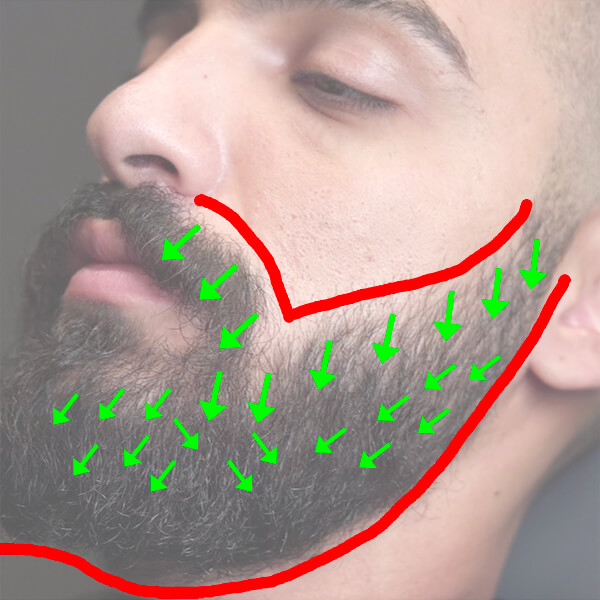How does Testosterone affect Beard Growth?

Back in 1982, the British Medical Journal of Dermatology published a research paper that sought to investigate the influence that plasma testosterone (T) and dihydrotestosterone (DHT) have on both the linear growth of facial hair and the density of facial hair growth.
We are contacted very frequently by men looking for a beard transplant in Dubai, so we looked at the results of the research, and the correlations that emerged between both the control and experimental groups in the research.
Firstly, lets explain some of the key factors and concepts that are discussed.
WHAT IS LINEAR GROWTH OF FACIAL HAIR?
Most men know that when it comes to shaving you are either shaving with the grain or against the grain. The grain refers to the direction in which the facial hair is growing and this is the concept of the linear facial hair growth.
For most men, shaving is a routine or chore that requires little thinking. However, it is worth considering the grain of your beard, mapping the direction of facial hair growth can help identify and optimise the tools that are used to keep your beard looking good. Mapping the beard is easy, use cotton wool ball and rub it against the stubble on your beard, if it catches against the stubble then you are moving against the grain!

WHAT IS TESTOSTERONE AND DIHYDROTESTOSTERONE?
Dihydrotestesterone (DHT) is a metabolite of testosterone, both of which are classified as androgens. DHT is largely produced in the organs where it is used in the body such as the prostate, with the enzyme 5-alpha reductase being primarily responsible for converting testesterone into DHT.
It is important to note that both of these hormones bind to the same receptors, however DHT does it better, more efficiently and more effectively. When it comes to hair, research has shown that hair on different parts of the body are affected by different hormones. For example an excess of DHT has been associated with both beard growth and male pattern baldness, which is why taking anti-DHT medication can sometimes help with hair loss on your head but reduce or cause patchy growth in your beard.
So How Does Testosterone Affect Beard Growth?
The research study in 1982 looked at both the linear facial hair growth and the density of facial hair, using a photographic method to map the results.
The research sought to examine the relationship between these two things and DHT and testosterone. The research involved twelve healthy men and eight men with coeliac disease who had previously demonstrated reversible androgen resistance. Coeliac disease is an autoimmune disease that impairs the body's ability to absorb nutrients.
The results of the research gound that linear facial hair growth was significantly reduced in the coeliac men than compared with controls and correlated with the concentration of DHT in their plasma but not with the concentration of testosterone. Also, the research found that the density of facial hair was correlated to the concentration of testosterone in the plasma. Interestingly, the research found that the participants who were engaging in a gluten-free diet experienced more pronounced effects in either group.


